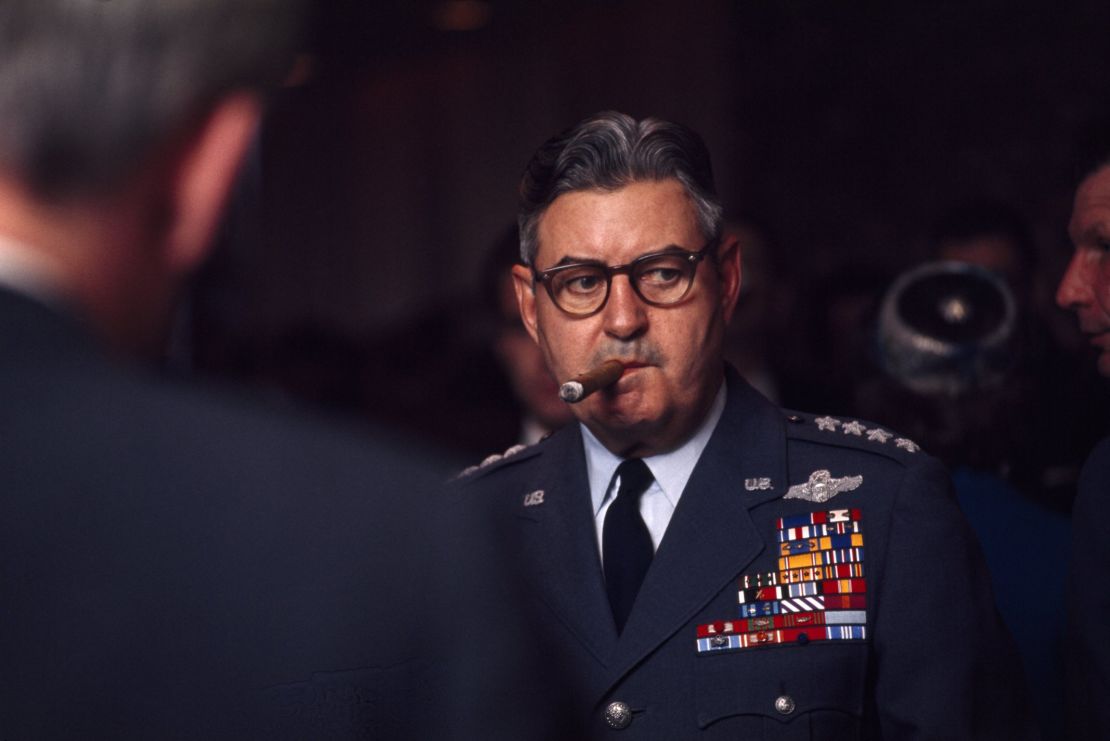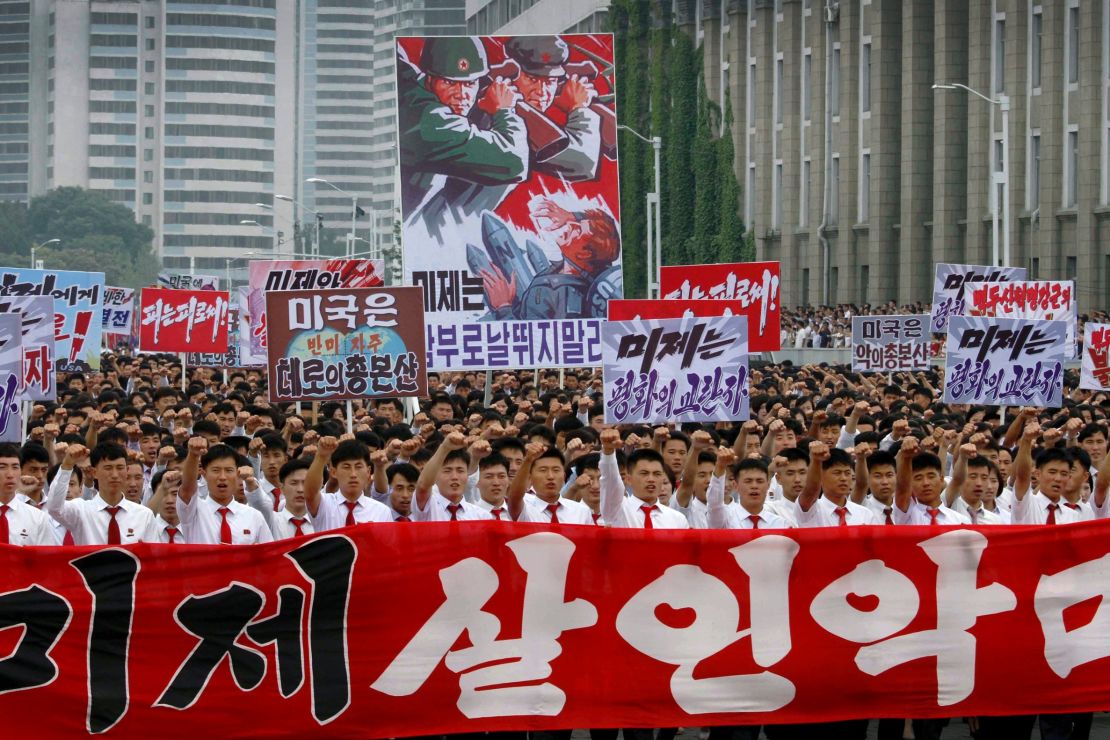The pause button was hit on the Korean War in 1953. Its legacy of destruction lives on.
In just three years, the war claimed the lives of millions of people and forever changed the Korean Peninsula.
“We went over there and fought the war and eventually burned down every town in North Korea anyway, some way or another, and some in South Korea, too,” said former US Air Force commander Gen. Curtis LeMay in 1988, during an interview for an Air Force military history volume.
By the time the armistice was signed on July 27, 1953, North Korea – which began the war with a population of 9.6 million – had suffered an estimated 1.3 million civilian and military casualties, according to figures cited by the US Air Force. South Korea, meanwhile, suffered up to 3 million civilian and 225,000 military casualties, from a total population of around 20.2 million in 1950.
Gen. Douglas MacArthur, a legendary figure in the US military who went on to become the commander-in-chief of the United Nations Command at the onset of the war, said during a congressional hearing in 1951 that he had never seen such devastation.
“I shrink with horror that I cannot express in words – at this continuous slaughter of men in Korea,” MacArthur said. “I have seen, I guess, as much blood and disaster as any living man, and it just curdled my stomach, the last time I was there.”
The war was one that many were reluctant to join, coming as it did just five years after the end of World War II.
More than 33,000 Americans were killed in the fighting and 600,000 from the Chinese military – who joined to protect their fellow communist neighbors – were left dead or missing.
The Chinese and the Americans went home after the fighting, but North Koreans stayed amid the ruins of the battle – their entire infrastructure decimated, their towns and cities completely obliterated.
Though the armistice date holds some significance in the United States – the US will start the process of banning Americans from travel to North Korea Thursday – the legacy of destruction was and remains a key piece of propaganda for Kim Il Sung, his son Kim Jong Il and his grandson Kim Jong Un, who now rules the country.
Photos: Scenes from the Korean War
The ‘original sin’
For North Koreans, destruction came from above. The conflict is seen as the first large-scale air campaign conducted by the US Air Force.
American planes dropped approximately 635,000 tons of explosives on North Korea (that’s more in three years than during the entire Pacific theater of World War II), including 32,000 tons of napalm, according to historian Charles Armstrong.

That continued fear of deadly US military airstrikes helps the North Korean government to portray Americans as a far-away caricature, a faceless enemy that leveled their country and could do so again.
“The bombing is treated as the American original sin in the (North Korean) propaganda and it certainly was savage,” according to Robert E. Kelly, a professor of political science at South Korea’s Pusan National University. “It’s become a political tool to justify the permanent emergency state. Japanese colonization is used the same.”
A ‘Sea of Blood’
Most historians say the war started when the eldest Kim invaded the south, but North Korea teaches its citizens the United States started the war – and only the Kim family can protect them.
The North Korean state attempts to engender a visceral hatred for the United States. Kindergarteners draw anti-American martial images. The news media releases videos of the US military in flames. The June 25 anniversary of the start of the Korean War is “the day of struggle against US imperialism.”
The man who led them through war, Kim Il Sung, is revered as a god in North Korea and credited with countless accomplishments: most notably inventing the country’s guiding ideology, juche – which means self-reliance – and liberating the Korean Peninsula from Japanese occupation.
Works of poetry and art are also attributed to him – and lionized by North Koreans.

An example of this is the play, “The Sea of Blood.” Considered among the country’s most important cultural works, it tells the story of a poor farmer who joins the fight against the Japanese occupation. He is killed, but his wife, who joins the communist resistance, goes on to help defeat the Japanese.
The play – which is quite violent and carries strong ethnocentric undertones, North Korea analysts say – is a key juche text, due to its courageous, independent and patriotic protagonist.
The juche ideology has been hammered into the North Korean psyche since Kim first introduced it during the 1950s. Works of propaganda like “Sea of Blood” – and the fact that it’s nearly impossible for those inside the country to get information from the outside world – help reinforce the underdog, survivor mentality that is at the heart of the juche idea.
Nuclear weapons
That survivor mentality extends into government, too. The country’s constitution states that “national defense is the supreme duty and honor of citizens,” and the country is governed by the “songun” – or military-first – policy, which places the armed forces above all else.

When it comes to North Korea’s nuclear and missile programs, the Kim regime looks at leaders like Libya’s Moammar Gadhafi – who gave up his pursuit of nuclear weapons for security guarantees and sanctions relief but was eventually ousted and killed – and believes those weapons are the key to regime survival.
So the country spends an incredibly high percentage of its budget on defense, and tells its people that the expenditures are crucial to preventing a US invasion.
With the country’s apparent successful test of an intercontinental ballistic missile earlier this month, they may be getting close to that goal.
“Now that the DPRK’s (the Democratic People’s Republic of Korea, North Korea’s official name) capability to strike the very heart of the US at any given time has been physically proved, the US would find it more difficult to dare attack the DPRK,” the North Korean Foreign Ministry said in a statement shortly after the missile launch.
“This is the only way to defend oneself and safeguard the dignity of the nation in the present hostile world where the law of the jungle prevails.”
CNN’s James Griffiths contributed to this report





































